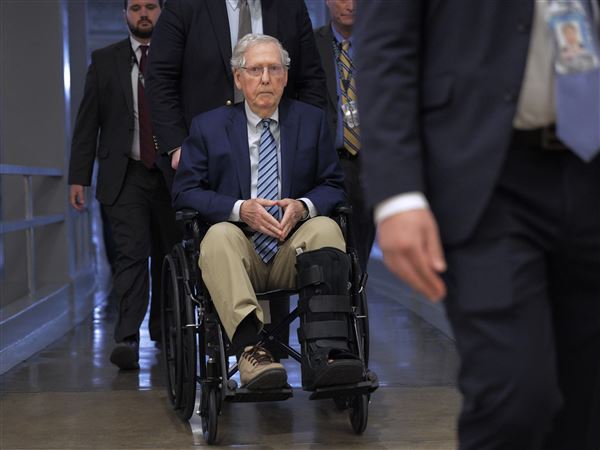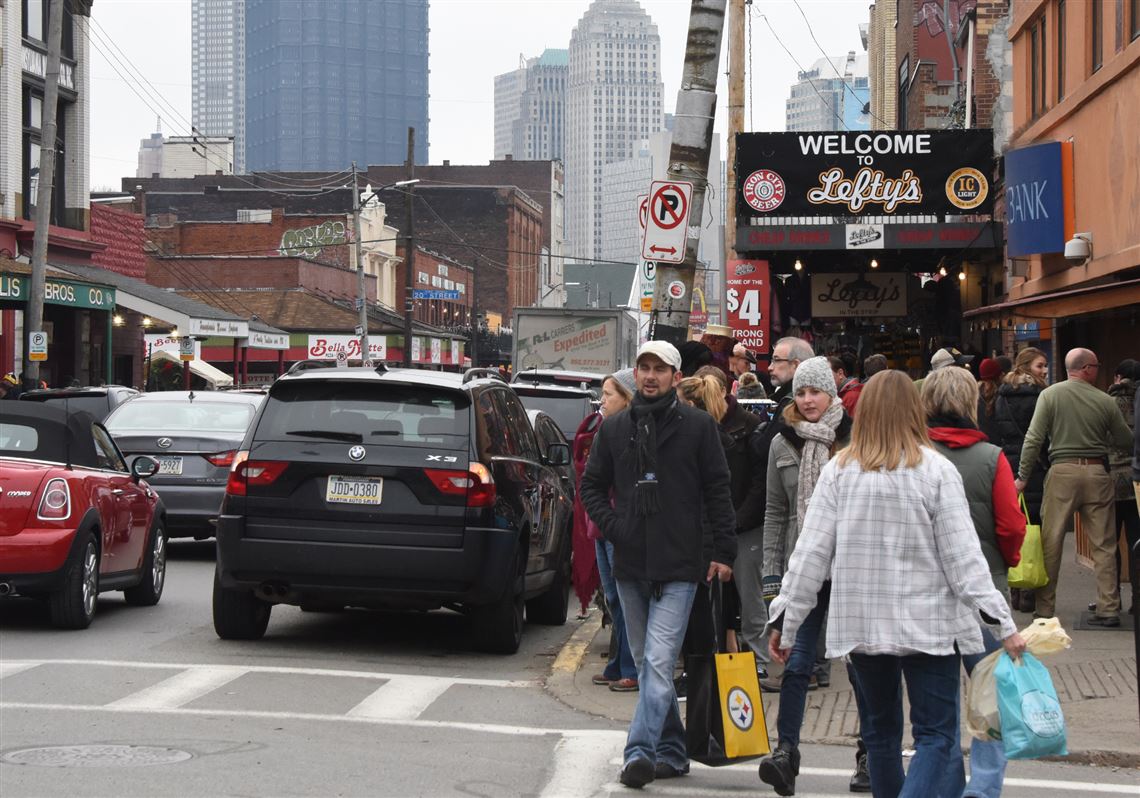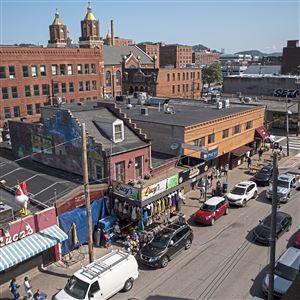Recommendations for improving transportation in the city’s Strip District emerged last week, including creating better infrastructure for pedestrians, changing parking prices, and making Penn Avenue a two-way street, among several others.
The transportation proposals — still in draft form — were presented Wednesday to roughly a dozen business owners and residents by the city-contracted international design firm Stantec.
The historic wholesaler district has become a hotbed of development where construction has disrupted parking and left longtime business owners teetering between apprehension and optimism for what could be ahead.
“This is a really unique district,” said Tom Yardley, principal at Stantec.
Mr. Yardley presented a color-coded map of the district that highlighted four areas — a commercial core centered around Penn Avenue, the riverfront, hotels and public services, and former industrial space that is transitioning to residential.
Stantec’s inventory, taken during the summer, revealed 10,300 parking spaces in the Strip — though 7,000 are not available for daily public use.
That’s a problem, according to the study, because demand in the Strip’s commercial core peaks between 1 and 3 p.m. on weekdays and at 10 a.m. on weekends, and at those times public parking in the area is “functionally full,” Mr. Yardley said. He said spaces are available, but on farther away side streets, in parking garages and in privately owned surface lots. Demand for parking plummets in the evenings.
Recommendations to solve that problem include adjusting pricing to match demand — in essence, increase parking rates along the heart of Penn Avenue to incentivize drivers to head to garages that may be a 10-minute walk away.
Another suggestion is to “unlock that supply” of empty, privately owned spaces by changing the city’s commercial parking tax rate — 37.5% — which “penalizes opening up private parking supply for paid public use,” Mr. Yardley said. So-called “shared parking district” arrangements have been successful in Ann Arbor, Mich., and Harrisburg, Mr. Yardley said.
Study authors also proposed the creation of a Strip District transit management association, or at least a full-time coordinator, to streamline all updated parking information into one publicly available portal.
Some of those ideas are not popular among the longtime Penn Avenue merchants.
“My customers are not going to walk out of my store on 22nd Street and walk down to the Heinz History Center parking lot with bags,” Jim Coen, owner of Yinzers souvenir shop on Penn Avenue, said about the proposal to change parking rates.
David Sunseri, president of Pennsylvania Macaroni Company, the Italian grocery store at 20th Street and Penn Avenue, shared similar concerns about incentivizing his customers to parking farther away.
“If you buy two cans of olive oil and four pounds of cheese and walk, you’re not going to want to do that,” Mr. Sunseri said. “... Let’s just hope the city doesn’t forget about people who’ve been [on Penn Avenue]. In January my family will have been there 118 years.”
There’s one idea both business owners can get on board with: a new parking garage.
Mr. Sunseri said he owns a building on 21st Street near a city public safety facility, and that he would be willing to work out a deal with the city to build a garage on that land.
He said he is “optimistic” about development in the Strip, but he just wants to make sure new and old can “coexist.”
An influx of new residents, shoppers and employees is expected with development, and the Stantec study recommends new safety measures for pedestrians, including a proposal to make Penn Avenue a two-way street.
Twenty-five “severe” crashes involving pedestrians occurred between 2013 and 2017, according to Pennsylvania Department of Transportation statistics.
Penn Avenue’s two one-way lanes encourage speeding and inbound through traffic, Mr. Yardley said.
City officials will distribute a revised list of strategies and a comment form on the project website in the coming weeks, said Dara Braitman, of the city’s Department of Mobility and Infrastructure.
Ms. Braitman called the input from businesses, residents and visitors “invaluable.”
“We are excited to continue developing a list of both short- and long-term strategies that will improve access to and through the Strip District, enhance and increase multimodal facilities, identify opportunities to make parking more navigable, and generally improve the overall safety and function of the roadway network,” she said. “Strategies will be designed to allow longtime businesses to continue to thrive and to support new development.”
First Published: December 16, 2019, 5:16 a.m.


















